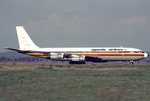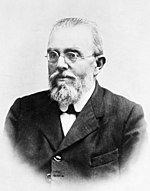TWA Flight 800 (1964)

Trans World Airlines Flight 800 was an international scheduled passenger service from Kansas City, Missouri to Cairo, Egypt via Chicago, New York City, Paris, Milan, Rome, and Athens. The Boeing 707 crashed during take off on runway 25 at Leonardo da Vinci–Fiumicino Airport, Rome at 13:09 GMT on a flight to Athens International Airport, Greece on 23 November 1964. As the aircraft reached 80 knots during its take off roll, the instruments for engine number 4 indicated zero thrust. The flight crew assumed that this engine had failed; since the aircraft was below its V1, the safest course of action was to abort the take off, which was done when the aircraft was around 800 metres along the runway. This was accomplished by ordering full reverse thrust on all engines, as well as deploying their thrust reversers. The aircraft began to slow down, but not as quickly as expected. Its steering was also not functioning normally. When a compactor began to cross the runway, the aircraft was unable to avoid striking it. Eventually the aircraft stopped a further 260 metres down the runway, and an evacuation began. This being said, smoke and flames blocked most of the passenger exits, making escape slow, and after only 23 of the 73 people on board had evacuated the aircraft exploded, killing the remaining 50. A prominent fatality was passenger the Most Reverend Edward Celestin Daly, OP, Bishop of the Roman Catholic Diocese of Des Moines, Iowa, in the United States, who had just participated in Vatican Council II.
Excerpt from the Wikipedia article TWA Flight 800 (1964) (License: CC BY-SA 3.0, Authors, Images).TWA Flight 800 (1964)
Strada Perimetrale Aeroporto di Fiumicino,
Geographical coordinates (GPS) Address Nearby Places Show on map
Geographical coordinates (GPS)
| Latitude | Longitude |
|---|---|
| N 41.802777777778 ° | E 12.2375 ° |
Address
Strada Perimetrale Aeroporto di Fiumicino
Strada Perimetrale Aeroporto di Fiumicino
00054 , Focene
Lazio, Italy
Open on Google Maps









